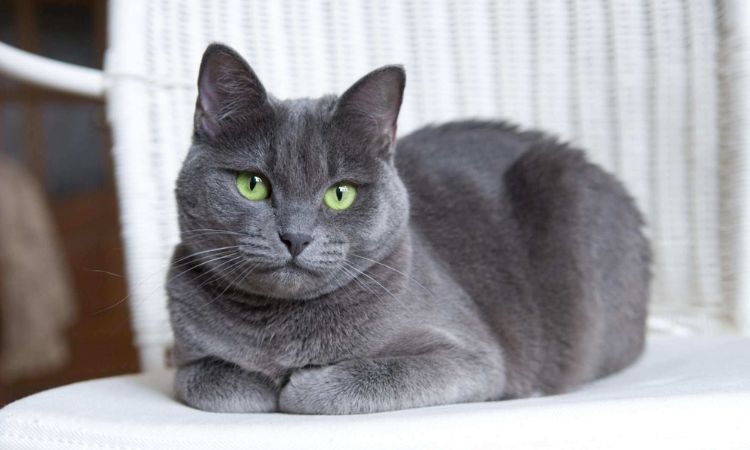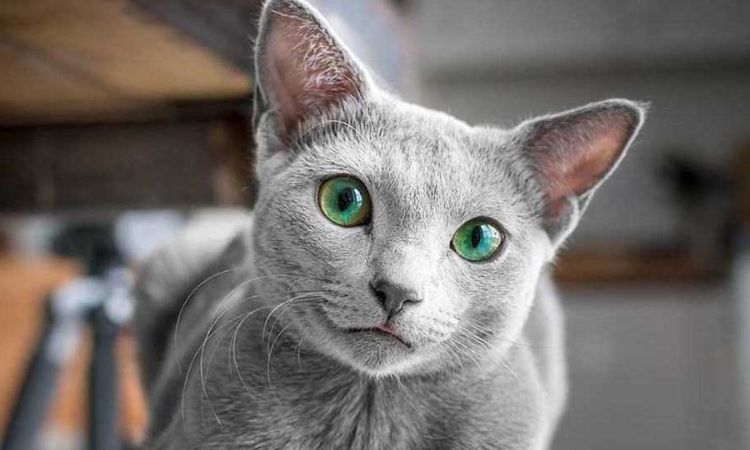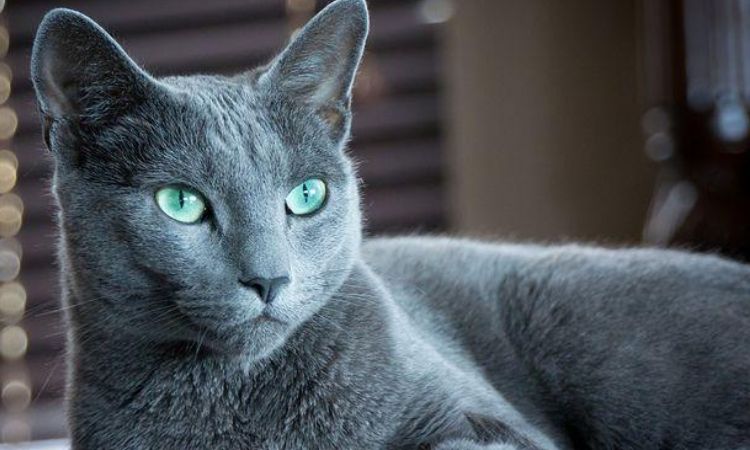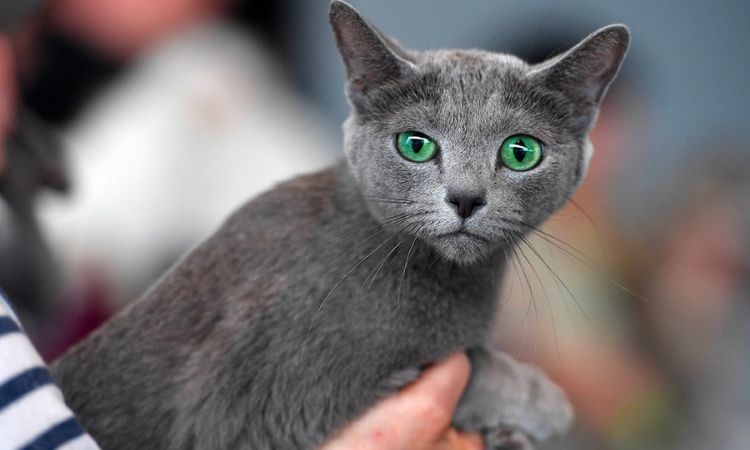With their shimmering silver-blue coats and vivid green eyes, Russian Blue cats are the epitome of quiet elegance. But these graceful felines are more than just beautiful—they’re intelligent, affectionate, and deeply loyal to their humans.
Whether you’re curious about their temperament, interested in their care needs, or wondering how much they cost, this guide has everything you need to know. Let’s explore what makes the Russian Blue such a treasured companion.

Russian Blue Cat Price
The price of a Russian Blue cat can vary significantly depending on several key factors. On average, you can expect to pay anywhere from $500 to $4,000. Cats purchased from reputable breeders typically fall on the higher end of the spectrum, especially those with a strong pedigree or show-quality lineage. In contrast, adopting from a shelter or rescue may cost significantly less, often ranging from $75 to $300, depending on the organization.
Several factors influence the final price:
- Pedigree: Cats from champion bloodlines or those registered with major cat associations are priced higher due to their lineage and potential for breeding or showing.
- Location: Prices can fluctuate depending on the region or country. In urban areas or places with fewer breeders, costs may be steeper.
- Breeder Reputation: Experienced, ethical breeders who prioritize health screenings, vaccinations, and early socialization may charge more, but they also offer more assurance regarding the cat’s long-term health and temperament.
In addition to the upfront cost, prospective owners should prepare for ongoing expenses. These include:
- Food: High-quality cat food to maintain their health and coat condition.
- Veterinary Care: Routine checkups, vaccinations, spaying or neutering, and emergency care.
- Grooming: While Russian Blues require minimal grooming, occasional brushing and basic hygiene tools are still necessary.
Owning a Russian Blue cat is a long-term commitment, and while they’re not the cheapest breed, their loyal temperament and low-maintenance grooming needs make them a rewarding investment for the right home.

Physical Characteristics
The Russian Blue is instantly recognizable for its graceful, aristocratic appearance. With a shimmering silver-blue coat, vivid green eyes, and an elegant yet athletic frame, this breed combines natural beauty with poise.
Distinct Appearance
Russian Blues are best known for their short, dense coat that has a soft, plush texture and a luminous silvery sheen. Their fur lies double-layered, standing slightly away from the body, giving them a velvety look and feel. Their eyes are another striking feature—vivid, almond-shaped, and emerald green, typically developing their full color by around four months of age. The breed also boasts a triangular face, tall ears, and long, slender legs that contribute to their refined, almost regal look.
Size and Build
Russian Blues are a medium-sized breed with a slender yet muscular body—often described as having a “foreign type” build in cat fancier terms.
- Weight: Adult males typically weigh between 10 to 12 pounds (4.5 – 5.5 kg), while females are slightly smaller, averaging 7 to 10 pounds (3 – 4.5 kg).
- Height: Most Russian Blues stand between 9 to 11 inches (23 – 28 cm) tall at the shoulder.
Despite their lithe appearance, they are surprisingly strong and agile, with a graceful way of moving that’s almost ballet-like.
Coat Type and Grooming Needs
The Russian Blue’s coat is one of its most distinctive features. It’s a short, double coat, with a soft undercoat that supports the fine guard hairs on top, creating that signature plush, “silvery” look. Unlike many short-haired breeds, the density of the Russian Blue’s fur gives it a unique texture that doesn’t lie flat.
Grooming is relatively simple. These cats are naturally clean and require minimal maintenance:
- Brushing once a week is typically sufficient to remove loose hairs and keep the coat healthy.
- Shedding is moderate, especially during seasonal changes, but less pronounced compared to long-haired breeds.
- Due to their dense coat, occasional bathing may be necessary, especially in warmer climates or for allergy-sensitive households.

Temperament and Personality
The Russian Blue is a gentle and intelligent breed known for its quiet dignity and deep emotional bonds with its human companions. These cats offer a unique blend of affectionate loyalty and quiet independence, making them ideal pets for those who appreciate subtle companionship over constant attention.
Typical Temperament
Russian Blues are famously affectionate and loyal, often forming a particularly strong bond with one or two people in the household. While they enjoy human company, they’re not overly clingy—preferring to follow their loved ones from room to room or quietly sit nearby rather than demand attention. This makes them independent, yet deeply connected.
They are also known for their intelligence. Russian Blues are quick learners and often enjoy puzzles, interactive toys, or even clicker training. Their reserved nature can make them appear shy at first, especially around strangers, but they tend to warm up once they feel secure in their environment.
Interaction with Families, Children, and Other Pets
Russian Blues are generally good with families, including respectful children. While they may be cautious around young kids or new people initially, their gentle disposition and non-aggressive nature mean they usually adapt well once they feel comfortable.
With other pets, particularly calm cats and well-mannered dogs, they tend to coexist peacefully—though early socialization helps. However, their somewhat shy and sensitive personality means they may prefer a quieter household and may not thrive in loud or chaotic environments.
Energy Levels and Daily Activity
Despite their calm demeanor, Russian Blues are surprisingly playful and agile. They enjoy bursts of activity—chasing toys, running, or jumping to high spots—followed by long periods of quiet observation or rest. Their elegant movement and curious nature mean they’ll often explore their environment with subtle grace. They do best with regular playtime to keep their minds and bodies engaged.
That said, they’re not hyperactive and can easily adjust to apartment living or more relaxed households, as long as they get adequate stimulation and interaction.
Vocalization and Communication Style
Russian Blues are typically quiet cats. They have soft, gentle voices and will rarely meow loudly or excessively. When they do communicate, it’s often through subtle vocal cues, eye contact, or body language. Their style is more about being observant and responsive rather than attention-seeking. This understated communication makes them a favorite for people who prefer a serene, non-disruptive pet.

Living with a Russian Blue Cat
Russian Blue cats thrive best in a calm and stable home environment where quiet and routine prevail. They appreciate having dedicated spots to perch, observe, and retreat to when they need privacy, such as window sills, cozy shelves, or secluded nooks. This need for peaceful surroundings aligns with their naturally reserved and somewhat shy nature, making them well-suited for homes that value tranquility over constant activity.
This breed is an excellent choice for individuals, couples, or families without very young children, as Russian Blues may be cautious or reserved around noisy or unpredictable environments. They tend to bond closely with their human companions, showing great loyalty and affection once trust is established. Russian Blues generally get along well with other pets, especially if socialized properly from a young age, but they do prefer a harmonious household without excessive disruption.
Russian Blues handle moderate periods alone better than some other breeds due to their independent streak, but they still benefit from daily interaction and playtime. They do not take well to sudden changes in their environment or schedule, so gradual introductions and consistency help them adjust more comfortably. Overall, a Russian Blue flourishes in a loving, calm home where their gentle temperament and intelligence can shine.






